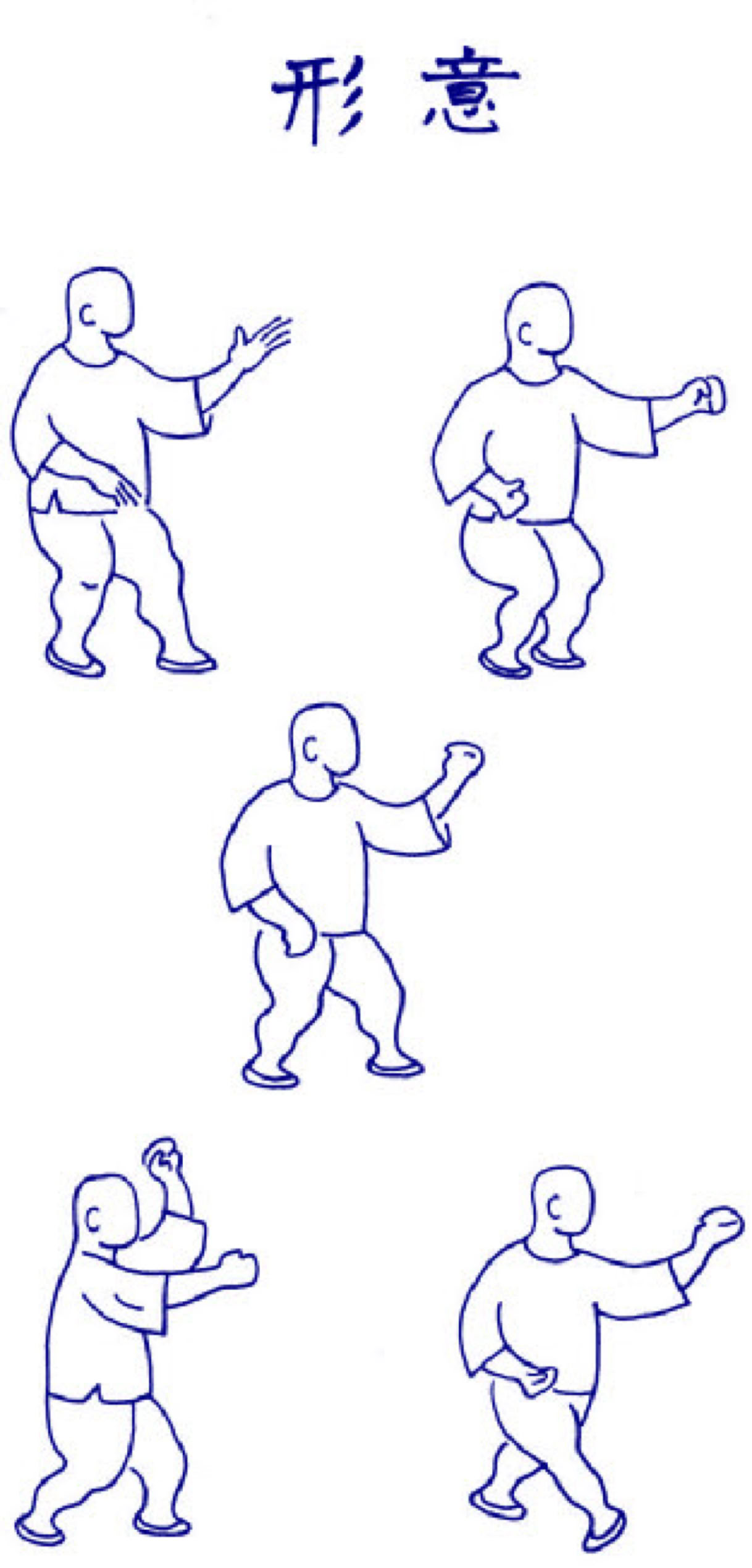

Ancient Taoism in Contemporary
Management Training & Martial Art


MARTRIX ORG.
Get your feeling working!
MARTRIX ORG.
Get your feeling working!
Ancient Taoism in Contemporary
Management Training & Martial Art


• HOME • About MARTRIX • Workshops • Trainers • Management Training • Coaching • Intuitive Boxing • Taikiken • Hachidankin • Baduanjin • 99-Taijiquan • Longevity • MartriX Exclusive Shop • Video Clips • Downloads • BrainQuakes• Index Page • Links • E-mail • HOME Nederlands •
Xingyi Quan (Hsing I - Form and Meaning Boxing)
Xingyi Quan or the form and meaning boxing is also called Xinyi Quan (free-mind boxing),
Xinyi Liuhe Quan (free-mind six-combination boxing)* or Liuhe Quan (six-combination boxing). There are two propositions about the name of this school of boxing. One holds that the body actions and movements should be guided by mind and that this school of boxing is an identity of mind and body; the other proposition states that this school of exercises are mere imitations of animal actions and movements and adopted the form and meaning of animal movements.
According to historical records, the creator of Xingyi Quan was Ji Jike (1602-1683) from Village Zuncun in Yongji County in Shanxi Province. A resident of the late Ming Dynasty and early Qing Dynasty, Ji Jike was also known as Ji Longfeng. On his trip south to the Shaolin Temple and Luoyang in Henan Province and Qiupu in Anhui Province, Ji Jike passed his art on to Zeng Jiwu. During the reign of Emperor Qianlong of the Qing Dynasty, Xingyi Quan was spread in Henan, Hebei and Shanxi provinces. Ma Xueli, a Luoyang resident in Henan, Dai Longbang, a resident of Qixian in Shanxi, and Li Luoneng, Dai's disciple from Hebei, all contributed to the dissemination and development of the boxing. Over centuries, this school of boxing is now practiced in different styles.
The Shanxi style is compact, delicate and yet forceful while the Henan style is powerful, vigorous and substantial. The Hebei style stresses steadiness, sturdiness and comfort As regards routines of fist fight, a similarity is seen between the Shanxi style and the Hebei style, both using three postures of the body, five major movements of axing, bursting, penetrating, hurling and traversing and imitations of 12 animal forms (dragon, tiger, monkey, horse, turtle, chicken, hawk, swallow, snake, owl, eagle and bear).
The Henan style mainly imitates 10 animal forms (dragon, tiger, chicken, eagle, snake, horse, cat, monkey, hawk and swallow).
* Liuhe (six combinations) is a special term used in Wushu, Chinese martial arts. In the Shaolin school of Wushu, there is a special branch called liuhe Men (six-combination-group), which includes
Uuhe Quan (six-combination boxing), Liuhe spear (six-combination spear), Uuhe sabre (six-combination sabre), etc. One explanation is that the six combinations mean spirit, breath and mind (inner three combination) and hand, eye and body (outer three combination). Another explanation is that the six combinations are the combinations of eye and heart (or mind), heart (or mind) and breath, breath and body, body and hand, hand and foot, foot and hip.


© MARTRIX org. Design by:
TheFeel.org multimedia
https://martrix.org
info@thefeel.org
Last modified
May 2025


